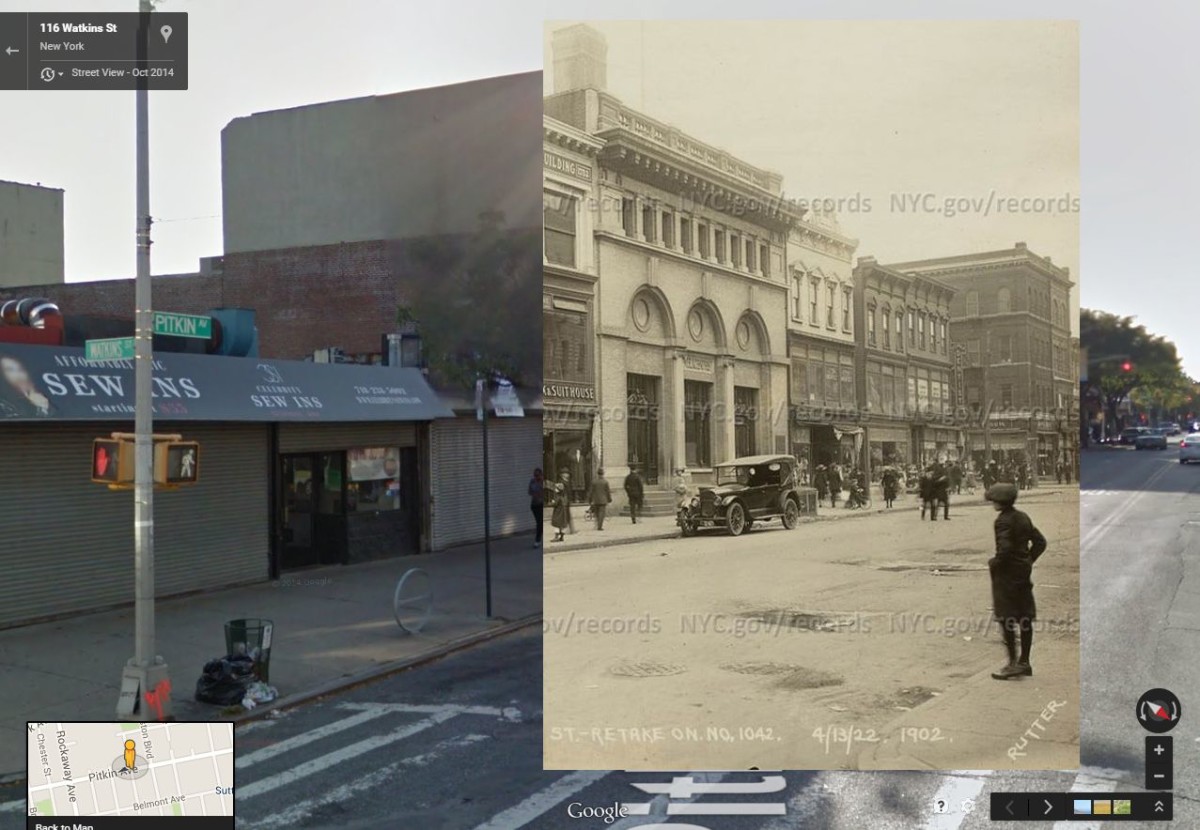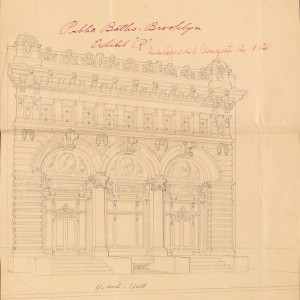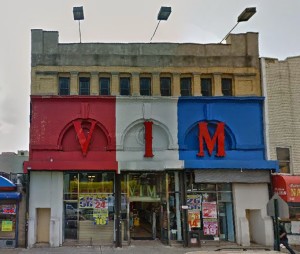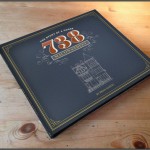GIVING BATHS TO BROWNSVILLE (1905)

New York City has always been known for its progressiveness.
Its mayors and city council seemed always to be trying to improve conditions for the masses – either out of a true passion to do good – or for the votes.
In the 1890s, it was all about relieving its citizens from the oppressive heatwaves that were hitting the city by passing out free ice to all who would stand in line for it.
At the turn of the century, it would be all about cleanliness and health.
THE RISE OF THE BATHS
According to 1908’s Modern Baths and Bath Houses, “out of 255,000 inhabitants of tenements…only 306 had bathtubs in the houses where they lived.”
This, apparently, was appalling to the better classes which felt that the lower classes had to be scrubbed clean, thereby giving rise to the reference to Saturdays being the bath day.

And so the bath house movement began, which was all about improving “the public health, dignity and upward mobility for those living in tenements.”
In 1905, Pitkin Avenue’s public baths were opened.
According to a blog post by Cory Seamer of Brooklyn Relics, the building used for Pitkin Avenue’s Public Bath is now used for something else:
“Designed by architect A.S. Headman, the Pitkin Avenue Public Bath was built in 1903 at a cost of $84,456….the building’s façade has been heavily modified. The ground floor has been partially demolished and retro fitted with a glass storefront, the cornice has been removed and the building has been given a veneer of cheap red, white and blue paint.”
Brooklyn Relics goes on to describe what the Pitkin Public Bath looked like when it opened:
“The original structure was designed to be ‘imposing in appearance with an architectural style recalling ancient Roman public baths with classical pilasters, columns, arches and cornices.’ The layout of the bath included a separate entrance for men and woman with a booth in the middle, which offered soap and towel rentals; the second floor was for boys. ‘The women’s side contained 28 rain baths and three bathtubs; the men’s side 28 rain baths and two tubs and boys’ floor 38 rain baths and one tub.‘”
THE FALL OF THE BATHS

When the New York State Tenement House Act was passed in 1901, the need for public baths in Brooklyn was undermined before Pitkin Avenue’s public bath house was even constructed.
According to Brooklyn Relics:
“While the law only required a toilet be provided in each flat, many developers also included a bathtub as well. This resulted in the owners of older tenement houses retrofitting toilets and bathtubs into their apartments lest they risk losing their tenants to the newer buildings. Eventually, laws were passed requiring all apartments to have bathing facilities and by mid-century, public bath use had declined significantly. With dwindling patronage, the Pitkin Avenue Public Bath was closed in 1949 amid city cutbacks.”
Nowadays, most everyone takes a bath inside of their own homes.
———————————————————————————————————————–
 This story was composed from research performed by The Brownstone Detectives. Allow us do an in-depth investigation of your house and its former owners and produce your very own House History Book. Your hardbound coffee table book will include an illustrated and colorful narrative timeline that will bring the history of your house to life. Contact us today.
This story was composed from research performed by The Brownstone Detectives. Allow us do an in-depth investigation of your house and its former owners and produce your very own House History Book. Your hardbound coffee table book will include an illustrated and colorful narrative timeline that will bring the history of your house to life. Contact us today.